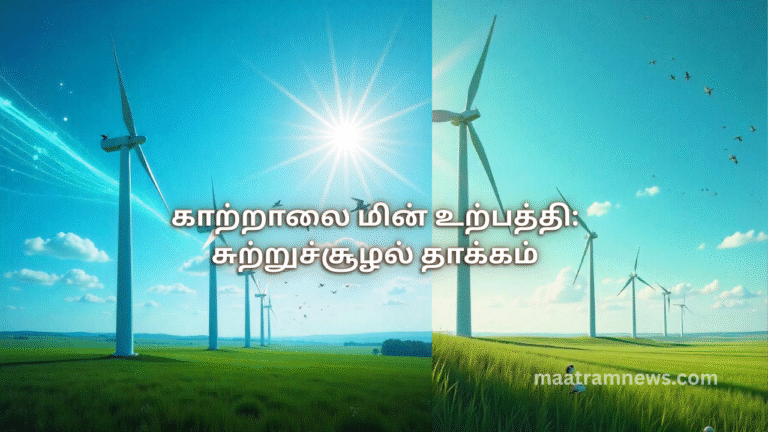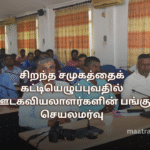காற்றாலை மின் உற்பத்தி: சுற்றுச்சூழல் தாக்கம்
நீர் இன்றி அமையாது இவ்வுலகு என்பதைப்போல் இந்த 21ஆம் நூற்றாண்டில் மின்சாரம் இன்றி எதுவும் இயங்காது என்ற நிலைக்கு தள்ளப்பட்டுவிட்டோம். அந்த அளவிற்கு மின்சாரம் எமது அன்றாட வாழ்க்கை ஓட்டத்தில் பின்னிப்பிணைந்துள்ளது.
எனினும் எமது மனித பாவனைக்கு தேவையான அளவு மின்சாரம் உற்பத்தி செய்வதற்கு பல சவால்களை எதிர்நோக்க வேண்டியுள்ளது. அவ்வாறு பல சவால்களை தாண்டி மின்சாரம் உற்பத்தி செய்யப்பட்டாலும் அதனால் பல பின்விளைவுகள் ஏற்படுகின்றது.
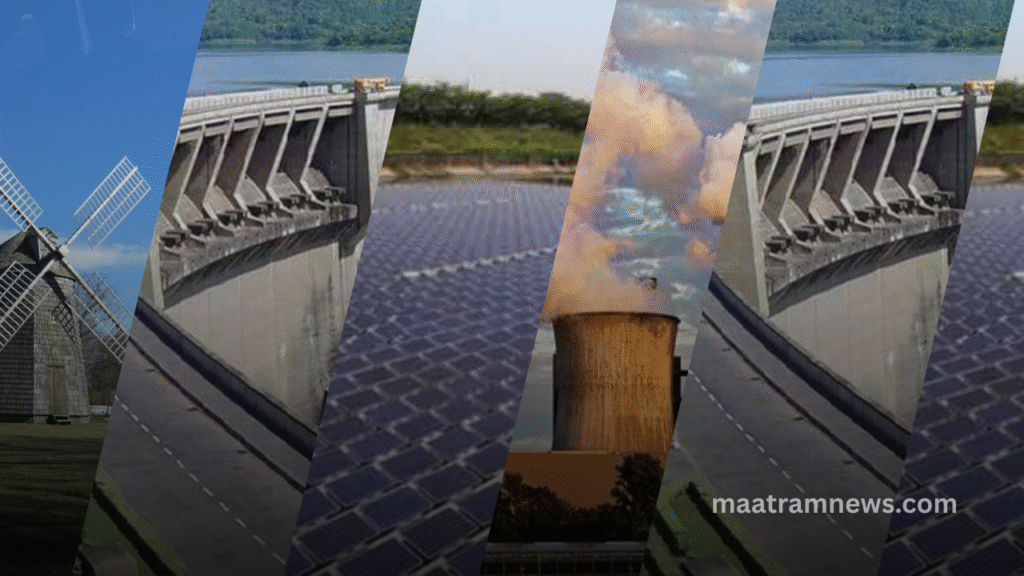
இவற்றை எல்லாம் கடந்து இன்று அனைவரினதும் கவனத்தை ஈர்த்த ஒன்றாக காற்றாலை மின் உற்பத்தி காணப்படுவதற்கான ஒரு காரணம் காற்றாலை மின் உற்பத்தி சுற்றுச்சூழலுக்கு உகந்தது, அது ஒரு பசுமை ஆற்றல் (பசுமை நுண்ணுயிர் சக்தி) நிறைந்தது என்று இதனை பொதுவாக அனைவரும் ஏற்றுக்கொண்டுள்ளனர்.
நாம் அனைவருமே நமக்கு தீமை அல்லது சிரமம் இல்லாத வரை எதையுமே கண்டுகொள்வதில்லை. அதைப்போல் தான் இந்த காற்றாலை மின் உற்பத்தியிலும் கூட மனிதர்களுக்கு தீங்கு விளைவிக்காத வரையில் நாம் இதனை கவனத்தில் கொள்ள போவதில்லை. எனினும் அதன் பின்விளைவுகளால் பறவைகளே அதிகம் பாதிக்கப்படுகின்றது என்பது எம்மில் எத்தனை பேருக்கு தெரியும். இந்த உலகில் மனிதர்களாகிய நாம் வாழ்வதற்கு எவ்வளவு உரிமை இருக்கின்றதோ அதே போல் ஒவ்வொரு உயிர்களுக்கும் உரிமை உண்டு என்பதை நாம் மறந்து செயல்படுகின்றோம் என்பதே என் கவலை.
இந்த கட்டுரையின் மூலம் காற்றாலை மின் உற்பத்தியால் எமக்கு எந்த அளவிற்கு நன்மை கிடைக்கின்றதோ அதே அளவிற்கு ஏற்படும் பாதிப்புக்களையும் பார்க்கலாம்.
காற்றின் இயக்க சக்தியை (kinetic energy) மின்சாரமாக மாற்றுவதையே காற்றாலை என்கிறோம். காற்றாலைச் சுழலி (Wind Turbine) எனப்படும் ராட்சத இயந்திரம் இதற்குப் பயன்படுத்தப்படுகிறது. இதில் இருக்கும் நீளமான தகடுகள்/இறக்கைகள் (Blades) காற்றின் வேகத்தால் சுற்றுவதால், அதனுடன் இணைக்கப்பட்டிருக்கும் மின்னாக்கி (Generator) இயங்குவதன் மூலம் மின்சாரம் தயாரிக்கப்படுகிறது.
காற்றாலை மின் உற்பத்தியில் சீனா முதல் இடத்திலும், அமெரிக்கா இரண்டாம் இடத்திலும் இருக்கின்றன. இந்தியாவின் காற்று வழி மின் உற்பத்தியில் தமிழ்நாடு 55% பங்கு வகித்து முதல் இடத்திலும் உள்ளது.
புதுப்பிக்க முடியாத மின் உற்பத்தி முறைகள் (எரிபொருள், நிலக்கரி, டீசல், பெட்ரோல் முதலியன) காரணமாக சுற்றுச்சூழல் சீரழிவுகள் (காற்று மாசு, பசுமைக் குடில் வாயுக்கள், உலக வெப்பமயமாதல், அமில மழை) அதிகரிக்கின்றன. இதிலிருந்து விடுபட காற்றாலை மின்சாரம் ஒரு சிறந்த மாற்று ஆற்றல்.
உதாரணம்:
- நிலக்கரி மின்நிலையம் → நிலக்கரியை எரிப்பதால் அதிக அளவில் கார்பன் டையாக்சைடு (CO₂) வெளியேறும். இது உலக வெப்பமயமாதல் மற்றும் காற்று மாசுபாடு ஏற்படுத்தும்.
- அதே நேரத்தில், அதே அளவு மின்சாரம் காற்றாலை மின் நிலையத்தில் உற்பத்தி செய்யப்படும் போது → எந்தவித மாசுபாடும் இல்லாமல், சுத்தமான பசுமை ஆற்றல் கிடைக்கும்.
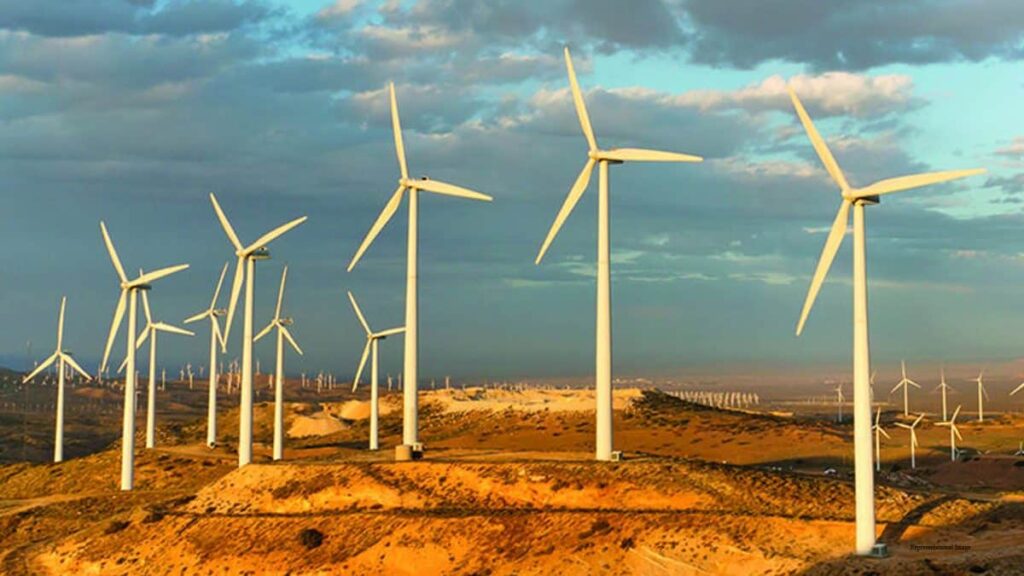
அந்த வகையில் காற்றாலையின் நன்மைகளை பார்க்கலாம்.
- புதுப்பிக்கக்கூடிய ஆற்றல் – காற்று இயற்கையில் எப்போதும் கிடைக்கும், அதனால் அது ஒருபோதும் முடிவதில்லை.
- சூழல் மாசுபாடு குறைவு – காற்றாலை மின்சாரம் உற்பத்தி செய்ய எரிபொருள் தேவையில்லை; அதனால் காற்று, நீர் மாசுபாடு ஏற்படாது.
- செலவு குறைவு – ஆரம்பத்தில் காற்றாலை அமைக்க செலவு அதிகமாக இருந்தாலும், பின்னர் பராமரிப்பு செலவு குறைவு. நீண்ட காலத்தில் மின்சாரம் குறைந்த செலவில் கிடைக்கும்.
- நிலத்தை முழுமையாக பிடிக்காது – காற்றாலை இருக்கின்ற இடத்தின் அருகிலும் விவசாயம், கால்நடை வளர்ப்பு போன்ற வேலைகள் செய்ய முடியும்.
- மின்சாரம் மாறுபடும் – காற்று வீசும் அளவுக்கேற்ப மின்சாரம் உற்பத்தி மாறும். எப்போதும் ஒரே அளவு கிடைக்காது.
- பசுமை ஆற்றல் – உலக வெப்பமயமாதலை குறைக்க உதவும். சுற்றுச்சூழலுக்கு மிகவும் உகந்தது.
இவ்வாறு பல நன்மைகள் இருந்தாலும் இதனால் தீமைகளும் உண்டு.
அந்த வரிசையில் இதன் மூலம் மனிதர்களை விட பறவை இனங்களே பாதிக்கப்படுகின்றது என்பதே உண்மை.
ஆம், இதற்கான காரணம் யாதெனில் பறவைகளின் பயண வழி ஆகாயமே. அவைகள் ஆகாயத்தில் பறந்து திரிபவை என்பதனால் இந்த காற்றாலைகள் அவைகளின் உயிரை காவு வாங்கும் எமன்களாக காணப்படுகின்றது என்பதே உண்மை.
மேலும் காற்றாலைகளால் ஒலி மாசுபாடு, உயிரினங்களின் வாழ்விடச் சிதைவு போன்ற பாதிப்புகள் ஏற்படுகின்றன.
வானில் பறந்து திரிந்து தனக்கான உணவை மட்டும் பறவைகள் பெற்றுக்கொள்வதில்லை. ஒரு சில ஐரோப்பிய நாட்டு பறவைகள் காலநிலை மாற்றங்களால் தங்களது இனப்பெருக்கத்திற்காக ஆசிய நாடுகளுக்கு பல மைல் தூரம் பயணம் செய்து வருகின்றன. இவ்வாறு வெளிநாட்டு பறவைகள் வருவதை வானத்தில் அந்நார்ந்து பார்த்த காலத்தில் நானும் வாழ்ந்திருந்தேன். அது எவ்வளவு ரம்மியமான அழகும் அமைதியும் மனதிற்கு தரும் என்பதனை நினைக்கும் போதே என் கண் முன் அந்த நினைவுகள் வந்து செல்கின்றன. எனினும் தற்போது பறவைகள் வானத்தில் பறப்பதை பார்க்கவே அதிசயம் என்ற நிலை உருவாகிக்கொண்டிருப்பதாக தோன்றுகின்றது. இதற்கு உதாரணமாக சிட்டு குருவிகளை கூட சொல்லலாம். அவைகள் நாங்கள் உணவு உண்ட பின் நிலத்தில் சிதறி கிடக்கும் சோற்றுப் பருக்கைகளை கொத்திச் சாப்பிடுவதற்கு வரும் அழகோ தனி… எனினும் தற்போது சிட்டுக்குருவிகளை காண முடியவில்லை.
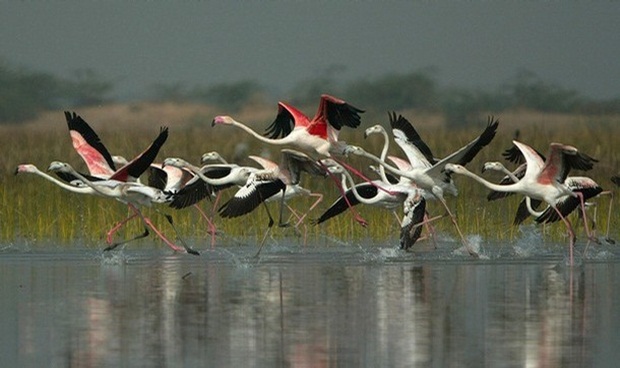
இது இவ்வாறு இருக்க, வலசை பறவைகளின் கதைக்கு வருவோம்…
வலசை பறவைகள் நீண்ட தூரம் பயணம் செய்து வந்து தங்கள் இனப்பெருக்கத்தை மேற்கொள்கின்றது. இவ்வாறு அவைகள் பறந்து வரும் பயணப்பாதையில் காற்றாலைகள் காணப்படுவதால் பறவைகள் அந்த காற்றாலைகளில் சிக்கி உயிரிழக்கின்றது. அது மாத்திரமின்றி பறவைகளுக்கு தங்களது பயணப்பாதையில் இருக்கும் தடைகளை உணரும் திறன் உள்ளது. அதிலும் சிறப்பாக நீண்ட தூரம் பயணம் செய்யும் பறவைகளுக்கு குறிப்பிட்ட தூர இடைவெளியில் தங்களுக்கு ஆபத்து இருப்பதை உணர்ந்து விடும் திறன் சற்று அதிகமாகவே உள்ளது. இவ்வாறு அவைகள் தடைகளை உணரும்போது தங்களது பாதைகளை மாற்றி வேறு இடங்களுக்கு செல்ல முயலும். மேலும் அவைகள் வருகை தராமலே போய்விடும். இவ்வாறு இடம்பெறுவதால் குறிப்பிட்ட பறவை இனங்களே அழிந்து விடும் என்பதில் ஐயமில்லை.
இவ்வாறு வலசை பறவைகள் மாத்திரமின்றி உள்ளூர் பறவைகளும் இந்த காற்றாலையின் மூலம் பாதிக்கப்படுகின்றன. குறிப்பாகப் பறவைகள், வவ்வால்கள் எனப் பறக்கும் உயிரினங்கள் காற்றாலைத் தகடில் (Wind Turbine Blades) மோதி இறந்துபோகின்றன. இதுபோல் நேரடி மோதலால் ஏற்படும் மரணங்கள் தவிர, காற்றாலைகளால் பல உயிரினங்களின் வாழ்விடமும் மோசமாக பாதிக்கப்படுகிறது.
1990-களில் அமெரிக்காவின் அல்டமான்ட் பாஸ் (Altamont Pass) என்ற இடத்தில் அமைந்துள்ள காற்றாலையில் ஏற்பட்ட கழுகு வகைப் பறவைகளின் (Raptors) திடீர் அதிகப்படி மரணமே இந்த பிரச்சினையை கவனத்துக்குக் கொண்டுவந்தது.
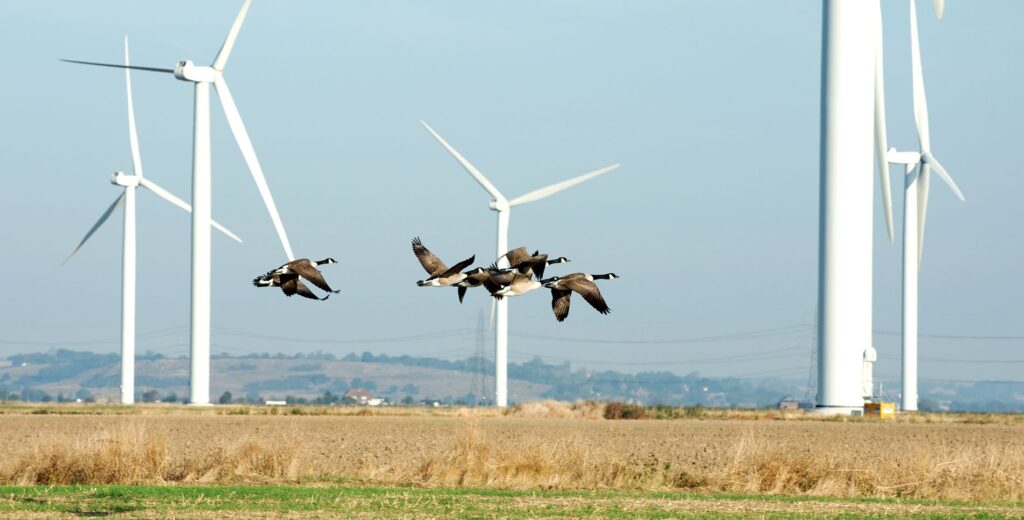
இவை அனைத்துமே சாதாரணமாக எமது பார்வையில் தெரிகின்றது. எனினும் இவற்றை தாண்டி பல சிக்கல்கள் உள்ளன. நாட்டின் வளர்ச்சியில் பாரிய பங்கினை இந்த காற்றாலைகள் வகிப்பதை நினைத்து மகிழ்ந்தாலும் எதிர்காலம் குறித்து சிந்திக்கும் போது சற்று பயமாகவே உள்ளது.
இருந்த போதிலும் காற்றாலைகளின் பாதிப்புகள் குறித்த ஆய்வுகள் செய்து, காற்றாலைகள் அமைக்கும் முன் அதற்கான இடங்களை கவனமாகத் தேர்வு செய்வதன் மூலம் பறவைகளுக்கு ஏற்படும் பாதிப்புகளை வெகுவாகக் குறைக்க முடியும்.
source : காற்றாலைகள் கொல்லும் பறவைகள்
தொகுப்பு :
Showmini suthantharaj
Journalist
Maatram News Writer
மேலதிக தகவல்களுக்கு மாற்றம் செய்திகள் இணையத்தளத்தினுள் பிரவேசியுங்கள்.
மேலதிக தகவல்களை உடனுக்குடன் பெற்றுக்கொள்ள மாற்றம் செய்திகள் முகநூல் பக்கத்தை பின்தொடரவும்.
Wind Power Generation: Environmental Impact
Just as the world cannot exist without water, in the 21st century, we have reached a point where nothing can function without electricity. To that extent, electricity has become deeply embedded in our daily lives.
However, generating the required amount of electricity for human consumption comes with many challenges. Even when electricity is produced overcoming these challenges, it brings several side effects.
Despite all this, one aspect that has captured everyone’s attention today is wind power generation. The reason is simple: wind power is environmentally friendly, it is a renewable energy source, and everyone generally accepts it as a “green” source of energy.
As humans, we rarely notice things unless they cause us harm or difficulty. Similarly, in wind power generation, we do not pay much attention as long as it does not harm humans. Yet, the truth is that birds are significantly affected by it—a fact known to very few of us. Just as humans have a right to live in this world, every living creature also has a right, which we often forget while acting. This is my concern.
Through this article, we can examine both the benefits and the impacts of wind power generation.
Wind energy refers to converting the kinetic energy of wind into electricity. A giant machine called a wind turbine is used for this purpose. Its long blades spin due to wind speed, which drives a generator connected to it, producing electricity.
In wind power generation, China ranks first, and the USA ranks second. In India, Tamil Nadu contributes 55% to wind energy production and holds the top position.
Non-renewable power generation methods (coal, diesel, petrol, etc.) cause environmental degradation, including air pollution, greenhouse gases, global warming, and acid rain. Wind power provides an excellent alternative to escape these effects.
Example:
- Coal power plants → Burning coal releases a large amount of carbon dioxide (CO₂), causing global warming and air pollution.
- At the same time, generating the same amount of electricity using a wind farm produces clean, pollution-free green energy.
Let’s now look at the benefits of wind energy:
- Renewable Energy – Wind is naturally available at all times and never runs out.
- Reduced Environmental Pollution – No fuel is required for wind electricity, so air and water pollution are avoided.
- Low Operating Cost – Although initial installation is expensive, maintenance costs are low, and electricity is available at a cheaper rate over the long term.
- Minimal Land Use – Farming, livestock rearing, and other activities can continue around the wind turbines.
- Variable Power Generation – Electricity generation varies with wind speed; it is not always constant.
- Green Energy – Helps reduce global warming and is highly environmentally friendly.
While there are many benefits, there are also drawbacks.
One such drawback is that birds are significantly affected. This is because the sky is the pathway for birds. Birds flying in the sky encounter wind turbines, which can be fatal to them. Moreover, wind turbines cause noise pollution and habitat disruption for many species.
Birds flying long distances, such as some European species migrating to Asia for reproduction due to climate change, are also impacted. I have personally witnessed these birds during migration, and the beauty and serenity they bring to the mind are unforgettable. However, nowadays, seeing these birds in flight has become rare. For example, sparrows used to come to eat scattered grains after humans ate, but they are now seldom seen.
Let’s focus on migratory birds…
Migratory birds travel long distances for reproduction. Along their migratory paths, wind turbines pose obstacles, and birds often get caught in them and die. Birds can sense dangers along their paths and may try to adjust their routes to avoid turbines, but this can still result in some species declining.
Local birds are also affected. Particularly, small birds and flocking species collide with wind turbine blades and die. Apart from direct collisions, wind turbines negatively affect the habitats of many species.
In the 1990s, at Altamont Pass, USA, the sudden high mortality of raptors due to wind turbines brought attention to this issue.
All of this is visible to the naked eye. Yet, beyond these, there are several other challenges. While we may feel happy about the significant contribution of wind turbines to national development, thinking about the future can be somewhat concerning.
Nevertheless, research on wind turbine impacts and careful site selection before installation can significantly reduce harm to birds.

